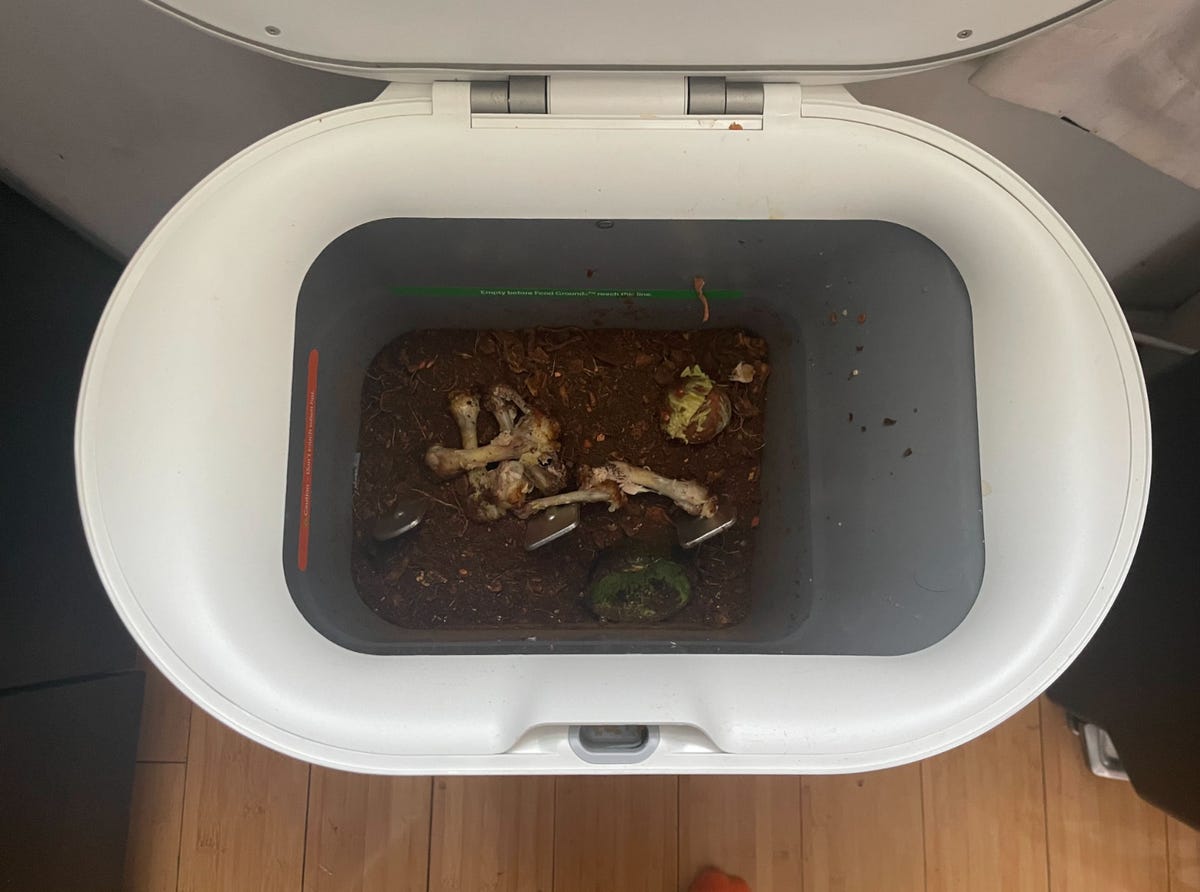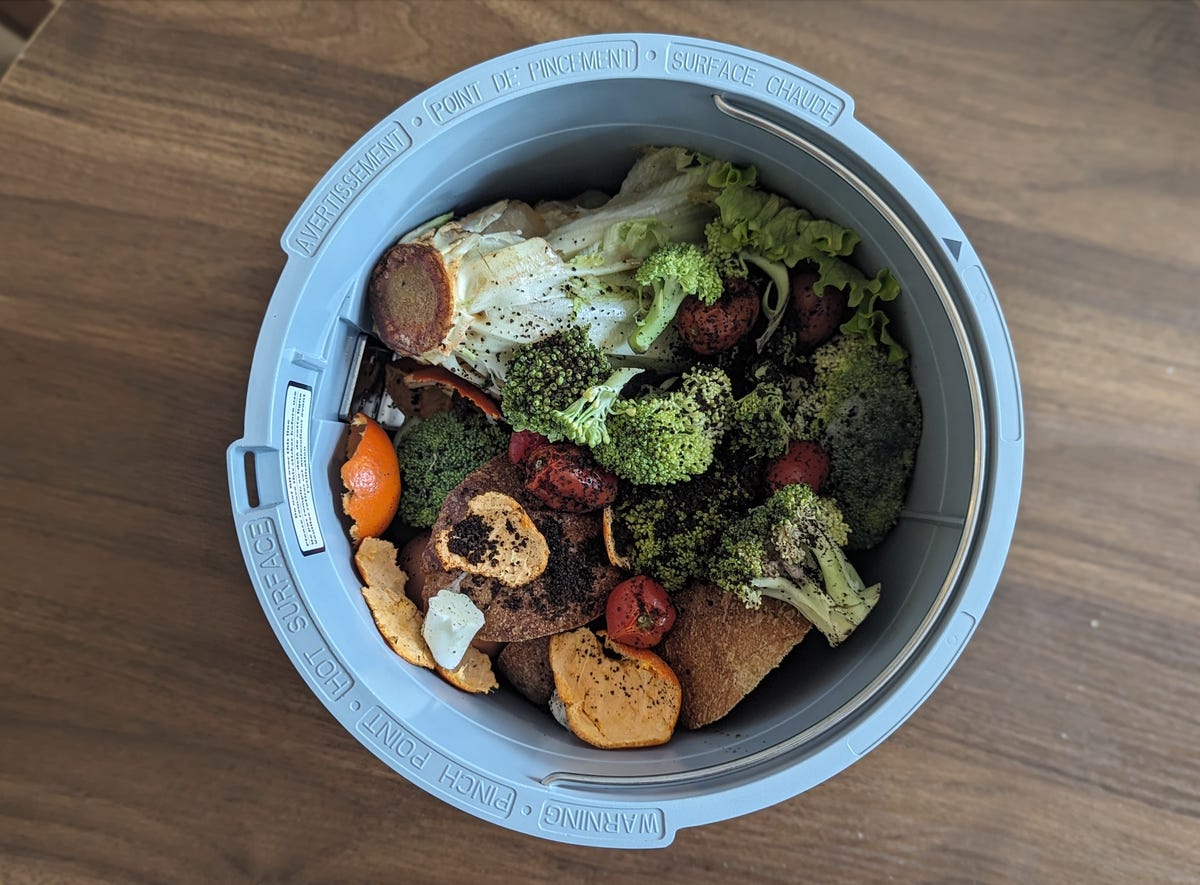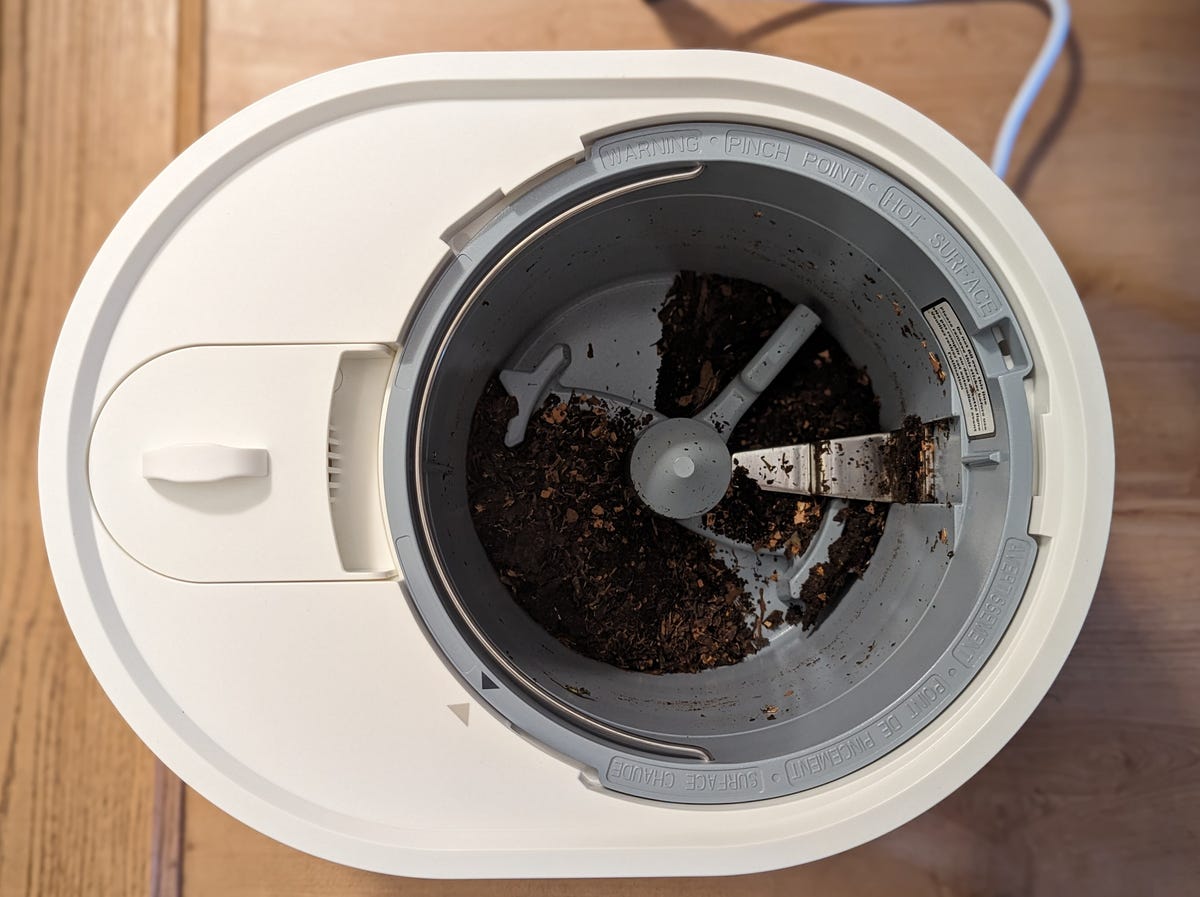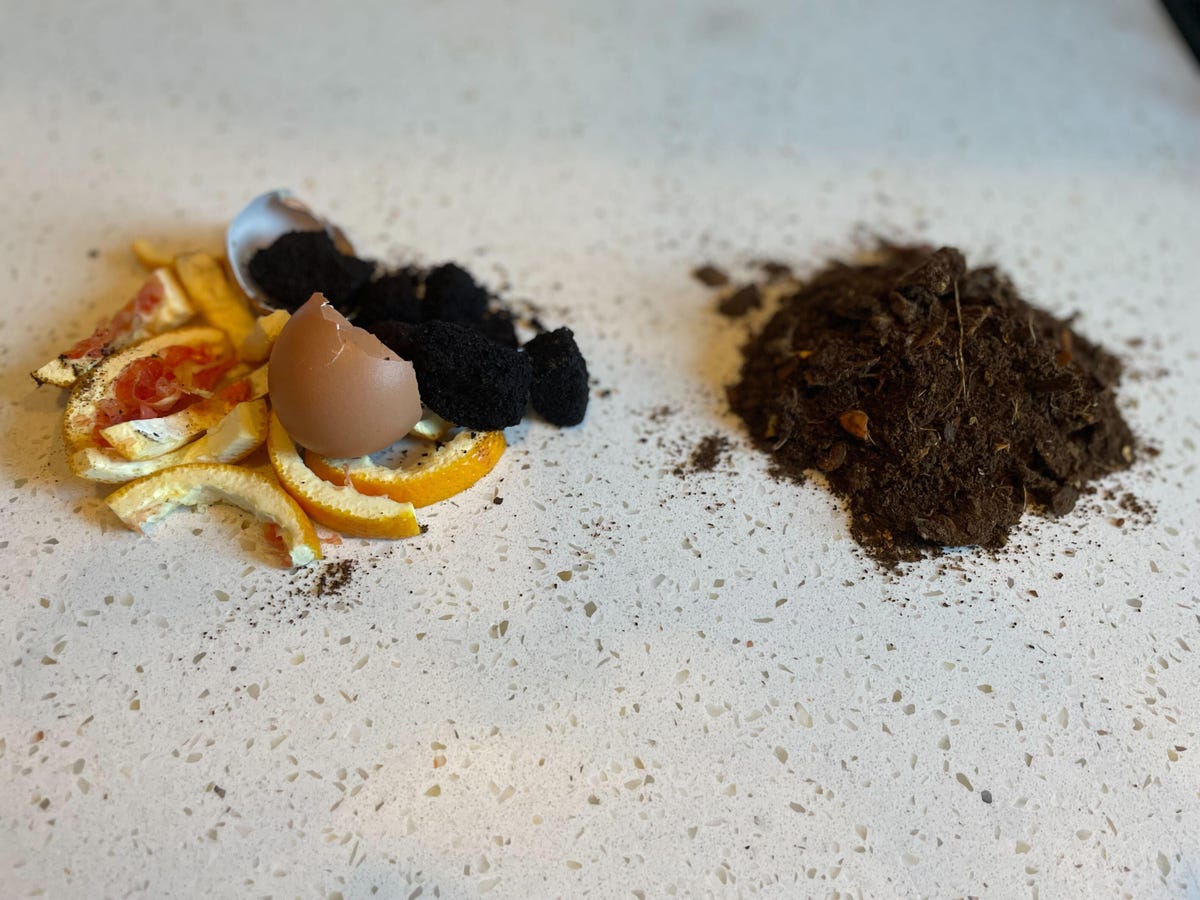Most of a head of romaine lettuce I had every intention of using before I left town for a week, then didn’t, because cheese > salad. The last handful of a pint of grape tomatoes, attempting to dehydrate themselves in the crisper drawer. A third of a bag of broccoli florets, depressed from lack of use, subtly browning at the edges. The paired heels of a fancy loaf of bread, too stale and suspect to even consider for croutons. A red onion that defied its reputation for long storage by daring to rot on top of the microwave. Not to mention certain jarred goods whose expiration dates definitely weren’t this calendar year.
Read more: How to Start a Compost Pile: A Beginner’s Guide
Prior to last week, these nearly 2 pounds of food waste that I’d unwittingly generated would have been fodder for the trash, destined to methanize — not a real word, but should be — in their plastic garbage bag coffin. Instead, they went by way of a new Lomi Bloom countertop food recycler bound for a more noble future as plant fertilizer, rather than as catalysts of global warming.
Why you should consider getting a countertop composter

I was pleasantly surprised find the Mill bin had pulverized these chicken bones after one grind and dry cycle.
It’s tempting to believe that food waste is harmless — it’s all biodegradable, right? It’s not despicable like unrecyclable plastic or other materials that don’t break down over time. Except that food waste, according to the Environmental Protection Agency, accounts for nearly 60% of greenhouse gas emissions coming from landfills. It’s a harsh reality, especially for those of us who live in areas without a compostable food collection program or who have no appreciable green space with which to tender our own compost.
Obviously, my first batch in the Lomi wasn’t representative of that which I’d toss in an average week, but it was perhaps representative of a bi-monthly fridge clean-out. Those 29 ounces of food waste were reduced by about 85%, down to only 4 ounces of dehydrated material, suitable for adding to potted plants (alongside mature fertilizer since Lomi’s output dirt alone can’t support plant life), gardening beds or at worst, back to the trash, but rendered a great deal less potent by their transformation.
But how much food waste can one person generate at home?

Some food waste is inevitable. What we do with it is not.
Well, that was the exact question I aimed to answer. One source puts the food waste tally at about 325 pounds per American per year, but I wanted to see what that looked like in my household, over one week. (These 325 pounds must also include food left on the plate at restaurants, but that’s a separate problem, but one that’s potentially also solvable, if owning a food recycler or smart kitchen bin makes you more likely to bring home leftovers even just to process them.)
Read more: Mill Bin Review: Turn Gross Food Scraps to Dirt in 6 Hours (Just Don’t Call It Compost)
I feel like I’m a good candidate for this in terms of having a lifestyle that potentially justifies — and maybe even necessitates — owning a countertop composter such as the Lomi. I do travel quite a bit, which unfortunately leads to some expired produce, given my attempts at eating well when I am actually at home. When I’m not traveling, I work from home, so some days I’m producing three meals’ worth of food scraps, primarily of the fruits and vegetables variety (see “eating well,” above) just in meal prep. When takeout or dinners out happen, leftovers are likely, and history tells me that at least some of those leftovers will become a bit too left over for my own comfortable consumption. Every day I’m generating food waste in one form or another.
So for a week, I weighed and added up every bit of food that I’d typically, mindlessly, put by way of the bin. Every eggshell (about .3 ounces each, but they add up), every peel, every inedible stalk or stem, and all the daily coffee grounds got a weigh-in this week before they got added to the composter.
How much did I toss and process in a week? (spoiler alert: a lot)

Countertop composter is a bit of a misnomer as this dirt made by Lomi is not ready to support plant life just yet.
I ran my Lomi Bloom, which has a capacity of 3 liters — a little less than a gallon — four times during my weeklong trial, so that’s saying something already. While the first batch was mainly composed of expired food rather than day-in-day-out food scraps, I still filled it to a point where it was worth running at least two other times. (The third is purring away as I type this.)
In one week I generated 91.2 ounces of food waste, or 5.7 pounds. That’s coming pretty close to the 325 pounds a year estimated for myself alone when multiplied by 52, without factoring in food that I also inevitably waste when dining out. After the composter, those 5.7 pounds became a mere 20 ounces.
The verdict on owning a countertop food recycler

Smart kitchen bins turn foul-smelling scraps into sweet-smelling dirt.
Honestly, I’m sorry I waited this long to own one. As an urban dweller, the primary benefit of having a countertop food recycler isn’t so much the availability of usable soil, as there’s only so much my three houseplants can take, but in the feel-good factor of doing what I can to offset my waste. Reducing food waste to something innocuous is only part of it. Not requiring so many plastic garbage bags is the other beneficial side of the coin not only environmentally, but also in financial impact. Any concerns I might have had in advance about using one — the noise, the smell, the space requirement — none of those were an issue, even in my studio apartment. (Running the Lomi at night was an effective white noise machine, honestly.)
Smart kitchen bins, food recyclers and composters for home use aren’t inexpensive, but it’s hard to put a price on the value of considering your own food waste, and doing something actionable to prevent it.






















+ There are no comments
Add yours